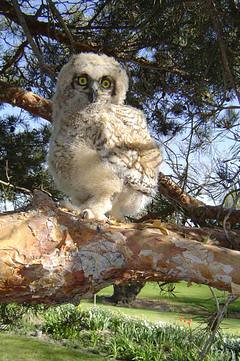Semiotics: Pop: An image may not be all it appears to be, may be much more than its appearance
.
A marvellously ins+tful article by Joe Carter in his blog Evangelical Outpost analyzes under the rubric "Pop Semiotics" how advanced technics has created "A New World of Blurs" (Aug10,2k6).
Although the phrase “seeing is believing” has become a cliché, it embodies a truth about the way we interact with our surroundings. Indeed, our perception of knowledge is so closely tied to visualization that we use the metaphor “I see” as a way of saying “I understand.”Semiote Analytics, by Anaximaximum
Losha.jpgBut when it comes to mechanically created imagery, what we see doesn’t always match reality. Take, for example, the [large] photo [you can see by clicking here.)]. It appears to be a picture of a lovely young woman wearing a hat. But look again. Notice anything out of the ordinary?
What is unusual about the photo is that it is not a photo at all. Rather it is a drawing, produced by the amazingly talented artist Halim Ghodbane using Adobe Illustrator. When we believed the image was a photo, we believed (albeit unconsciously) that the girl actually exists. But once we are made aware that this is just a drawing, we cannot be sure the girl exists anywhere outside of the artist’s mind.
UPDATE: Couric sheds 20 pounds in doctored publicity photo
In a similar way, recent controversies over manipulated images have lead us to question what is real and what is propaganda. The retouching of a photo by photographer Adnan Hajj initially raised questions about the integrity of Reuters. But once the public became aware of the deception, bloggers began to look closer and uncovered numerous examples of image manipulation by other agencies, including the Associated Press and New York Times.I recommend clicking up Joe's site and reading the entire blog-entry, as well as the back-and-forth mini-essays that constitute the comments section. But doing so will take you deeper into the political-ethical aspect of the phenom, as promoted by editors and jouralists of the Big Media. The advanced-technics, pop-semiotics phenom itself is much larger than what finds its way into the mass media. Named after the computer application Photoshop, pop semiotics has seen the advent of the process called photoshopping (or just plain "shopping") which is used for creating images in funny, ironic, and satirical modes. These photoshopped images can be malicious, they can be just great fun. On the latter note, see, for example, The Star Wars Photoshopping Project. On some sites devoted to exhibiting photoshopped imagery, competitions are held on themes using a specific base image, or a stated task.
This site lists a “taxonomy of fraud” that includes digitally manipulating images after the photographs have been taken; staging and presenting images as if they were of authentic spontaneous news events; photographers staging scenes or moving objects, and presenting photos of the set-ups as if they were naturally occurring; and giving false or misleading captions to otherwise real photos that were taken at a different time or place.
Beyond photoshopping, however, there are so many technical variations of image-making already that the total can't be quantified. Flickr reports that "photo" doesn't mean what it used indicate, so the image-share bank has had to add another category for the carefully staged and crafted artworks posted to its galleries, sometimes including text, that don't meet the parameters of what Flickr, when it started, assumed a photo was. Also, you'll want to read the stunning post on ExperienceCurve [Social Media, Marketing, Customer Experience] by Karl Long, entitled "Is Flickr Trying to Screw Artists?" (Aug23,2k6)). The comments are quite informative as well. In a comment a Flickr functionary is quoted as saying:
Our Community Guidelines state that non-photographic images such as screen shots, paintings, drawings, illustrations, graphic designs, scanned images, or digital art are not allowed in public areas of the site. You may still see some, but these types of images are generally blocked from appearing in searches or the Explore pages.An impartial person can see some wisdom in the policy from the standpoint of the "ownness" of photography, a unique art indeed that has every r+t to come into the specificity of its unique aesthetic sphere (here defined, however, by its machine technique, a camera only.
But, what about a photograph of another kind of art, other than the ones cited by the functionary? For instance, as a commenter mentions in the ExperienceCurve exchange, a photograph of a sculpture. What about photoconstructions--those half-photo, half-paste-in manual constructions that are then re-photgraphed as an ensemble?
One begins to think that perhaps Flickr's policy is more determined by the commercial interests of revenue sources like camera manufacturers than by a truly aesthetically-sensitive definition of photography in an age of exfoliating techniques, artforms, and hybridization within a given range of the arts. What about a handwritten original poem, crafted to be photographed? Such a photo is not a photo, Flickr seems to be saying.

 >br>
>br>









No comments:
Post a Comment